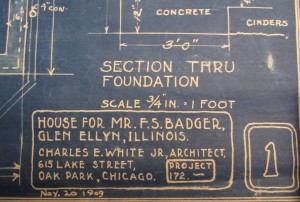 Are you happy with your search engine rank? Does your website attract the traffic you need?
Are you happy with your search engine rank? Does your website attract the traffic you need?
The solution may not be another traffic-generating program. Or even some new SEO trick that promises instant page-one ranking.
Your solution may be as simple as better web writing.
Can writing alone make a difference?
You betcha. Most people grasp that professonal copywriting generates better results than the type of writing they learned in English composition. What few people realize is that web writing is different from normal copywriting — even direct response copywriting — and can dish up better results online.
Don’t get me wrong. Direct response techniques will improve your web pages. But by adapting them slightly to work specifically for the web, you can get noticed by Google and your ideal prospects.
- Your search ranking will improve.
- Your traffic will increase.
- Your conversion rates could even soar.
First, though, you have to realize that there is no such thing as a quick fix. Simply rewriting your web pages today won’t give you the number-one spot on Google tomorrow. Nor will it make you rich overnight.
Realistically, results will improve gradually and steadily, which will give you time to build your operations and marketing to match this growth.
The Secret? Think like an architect
Writing a website is like writing a multi-page brochure for your business. You need an overall message for the website, and every page must work together to drive that message home.
It’s also like building a house. This is the image painted by Nick Usborne, who has been writing for the web since the late 90s. As far as I’m concerned, it’s one of the best ways explain why so many websites fall short.
A great website chunks information into categories and spreads it across different pages. It connects each of these pages with hyperlinks so people can move easily from page to page, sort of the way the rooms in your house are connected by electrical wiring.
That’s why, like a house, your website must be “designed” by a good information architect, not written by someone who’s just “good with words.” Click to tweet.
This information architect must organize all the information on a website and create a navigation system to help visitors quickly obtain that information. As you might guess, it often helps if that person is also a writer.
Imagine your website as a house
When a house is being built, the skilled labor takes care of the finishing touches. But all these workers care about are the few square feet they’ll be working on. The supervisor knows a little more because he sees how each laborers’ tasks fit together. But it’s the architect who understands everything related to the house
It’s the same way with your website. Perhaps you’ve hired someone to write your web pages. Perhaps you’ve added pages over time. But at no time did anyone design your website the way an architect would design a house. There’s no unifying message, no real reason to read your pages.
What’s worse, your website may be more like a Dr. Seuss house than a country club mansion. Sorry, but that’s not going to impress visitors (or Google).
4 tips for architecting your website
1. Make it easy to navigate. If your website is confusing, people will leave and try another site. Navigation should be a top priority if you want more visitors.
2. Make it easy to find the information people are looking for. Arrange information logically. Use subheads and bullets to provide white space and make important things stand out.
3. Offer fewer options. Group products into packages, so people have three choices, for instance, not ten. Then give one action to take, not a list. People don’t want to have to figure things out, so make it easy on them.
4. Drive action. As with direct response copywriting, your goal is still action. Tell people what you want them to do. Just be sure to keep it simple.
Ultimately you want to plan your website rather than letting it evolve over time. But these four tips will at least get you started.
*****
Want to learn all the ins and outs of writing for the web? Copywriting 2.0 is your source for learning today’s best practice in writing web pages, emails, blogs, and more. Copywriting 2.0: Your Complete Guide to Writing Web Copy that Converts


